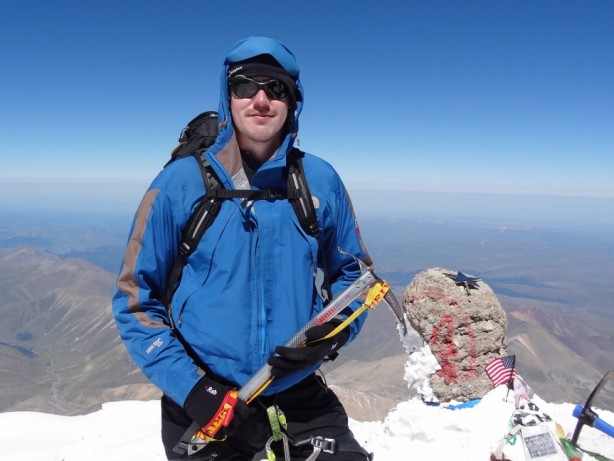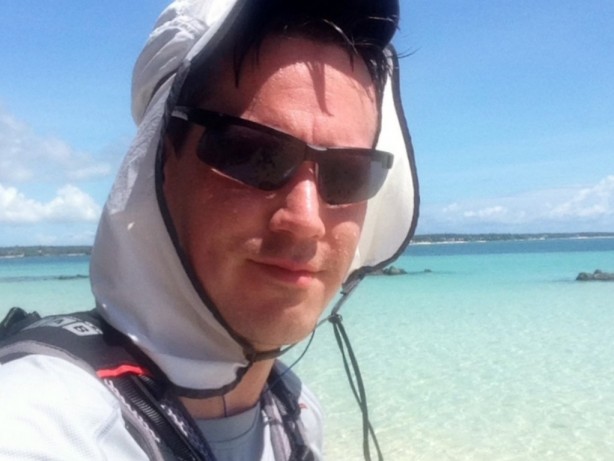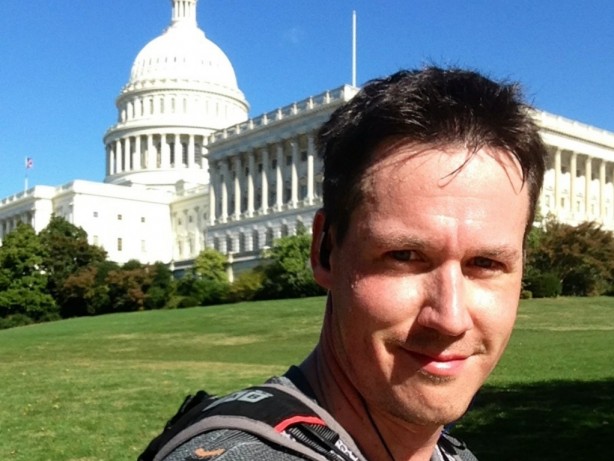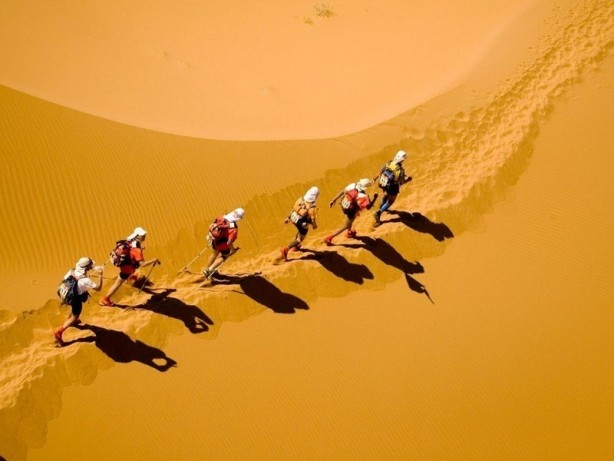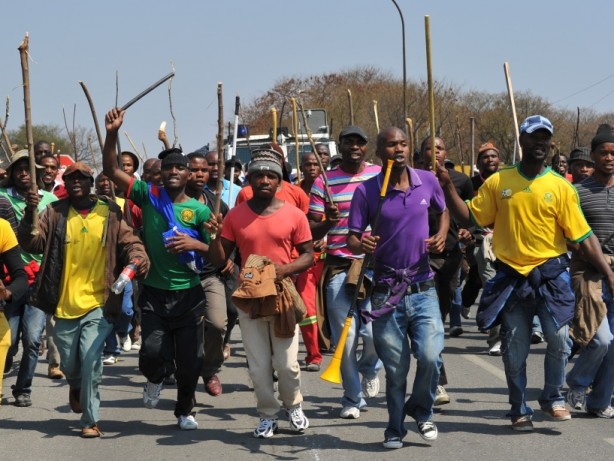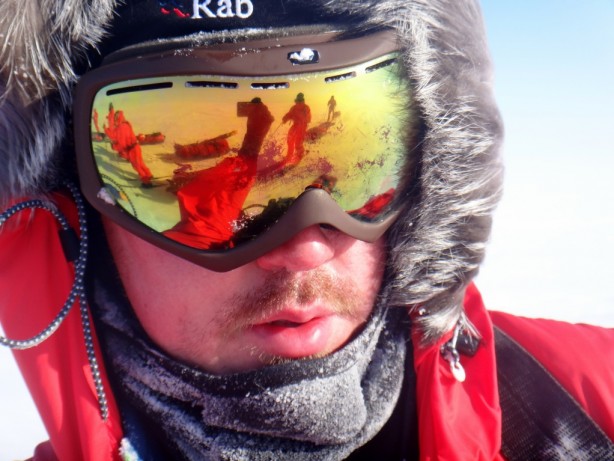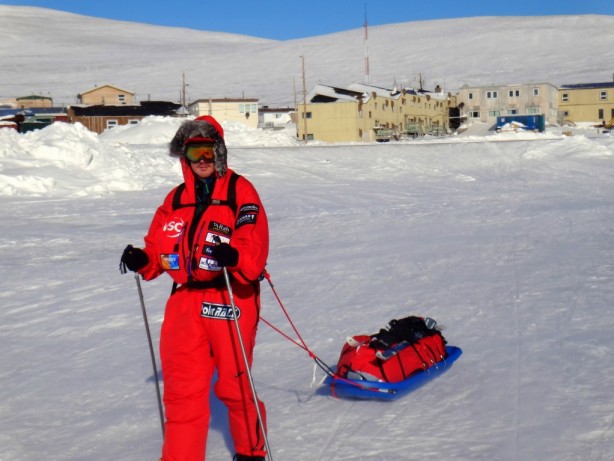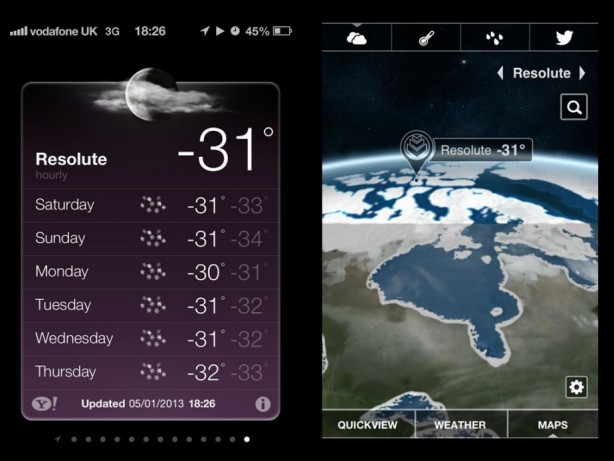The return from Elbrus - September 2nd 2012
2nd September 2012
I have had to ‘surgically’ remove another toe nail using the kid’s scissors I found in my flat… I guess I have to be thankful that this is all I lost following my successful summit of Mt Elbrus - Europe’s highest mountain (5642m) and my second of the Seven Summits.
The challenge and challenges
I set out to climb Elbrus with a small group of folk from the UK and the US - all comparatively experienced folk with a number of big mountains wracked up between them. We were led by the experienced mountaineer Gavin Bate, a seven summitter and celebrated mountaineer who once carried his climbing buddy (and kit), on his back, down to base camp from 8700m on Everest... 3 days and nights with no food and drink. Unbelievable. Coincidentally, I also learned Gavin is part of the support team on my North Pole expedition... A good guy to have around!
After our Russian drivers took us through fast flowing rivers in the 30 year old Russian 'Transit' vans, we arrived at the much tougher and lesser climbed, North side of Elbrus. At this stage, I could have been in Wales... We couldn't see the mountain, or even more than about 100m. The weather was awful, made worse by the sad news that a Czech climber had died the day before we arrived from exposure. It was -30c on the higher slopes. I always have a slight sense of nervousness on high mountains - they have to be respected. I arrived fully in the knowledge that this is one of the deadliest mountains on Earth, with up to 50 deaths per year.
I set up my tent sharing with two climbers of note, Derbyshire's own Nigel Vardy and Nottinghamshire's Dave Padgen. Both Nigel and Dave are motivational speakers who talk about their climbing experiences. Nige was unfortunate (or fortunate if you ask him) to lose all of his fingers and toes from frostbite in a terrifying night on Mt McKinley, but survived to tell the tale and inspire others to keep challenging themselves, no matter what the circumstances. You couldn't ask for a better guy on a hill than Nige - a great reminder of why I do these challenges, and also a great coach on how not to get frostbite! Dave is an incredibly successful paralympian, with a number of medals to his name. Dave has Cerebal Palsy and in 2008 successfully climbed Kilimanjaro - he was back on Elbrus for a second time attempting to be the first person with CP to summit... a challenge that put my own attempt into perspective.
The big off...
Our first day on the hill was simply an acclimatisation day - walking up to 3500m and getting familiar with the terrain. It rained perpetually and was one of the wettest times I can ever remember on a mountain. No matter how much Goretex you wore... you were going to be soaking and cold. It was great to get an idea of what we had in store for us, but the weather meant we only ever saw about 100m ahead.
After a night of more rain, where poor Nige ended sleeping in a cold puddle at one end of the tent, we got up and set off on a shuttle climb - carrying some of our food and kit up to the hut half way up the mountain - a truly epic day. We left at about 7am, still raining, and made our way up the mountain... the weather worsening as we went. Despite many years on mountains, I have never seen weather turn so bad, so quickly... within minutes, the snow started to drive, we had a 30kph wind screaming over the ridge and we started to get very, very cold.
Learning through mistakes
Fitness, strength and stubborness, I have always been pretty good at. However, organisational skills and dexterity are certainly not my forté and are the reason I was on the mountain - to practice self management prior to the pole. I am pretty good with the cold - primarily due to stubborness and a questionable thyroid, but I was starting to feel the bite. At this stage I was the only one without my thick gloves on. I was planning to change them when we next stopped, but it soon became clear we couldn't stop... it was too cold and we had to keep moving. Inevitably, I had to stop, I could barely feel my fingers. Bag down, I struggled to simply undo the buckles, let alone rummage through the plastic bin bag to find my thick gloves. I completely lost dexterity in my fingers and embarrassingly needed to get some help as I fumbled around and held up the group. This doesn't go down well at -30c. Lessons learned.... get a dry bag, put your gloves at the top of your bag and put them on early!
After arriving at the hut after wading (literally) through thigh high snow, we quickly had to turn back and head back down. It was about to get dark and we had at least 5 hours of descending. Some of the group were really struggling... Dave had pushed through many limits in his life, but this was a particularly tough day and he had a lot of falls, some quite spectacular, but horrifying to watch as I looked back up the mountain helplessly as he fell down time and time again (for a great account of Dave's challenges read his website at www.stumbling.co.uk). Night time fell and our next key lesson was learned - always prepare to be stuck out at night. As we were expecting to be back by about 4pm, only a few people had head torches... We spent at least 4 hours climbing and walking down sharing only 5 head torches between about 10 of us - a significant challenge on tough terrain in absolute darkness. We finally arrived in camp at 11pm after 14 hours on the mountain.
Back to square one
Whilst a much 'purer' form of climbing, being largely self sufficient with no porters, the frustration of long days can often be felt when you wake up in exactly the same place you started... However, back at base camp on our third day - we finally saw Elbrus itself! The weather had cleared to reveal the two summits, over three kilometers above us. The heavy snow the previous day had meant that at least 2.5 vertical kms of the mountain were now covered in snow and ice...
After a 'rest' day consisting of wandering around the lower slopes with our Russian guide Sasha (a 50 year old bear of a man who had summitted Elbrus over 50 times in his 20 year career), we set off from base camp for the last time - fully laden with kit. In another lesson learned, it was quite clear that I hadn't fully thought through my luggage. I had to carry both my 70 litre main pack and my 35 litre day bag (strapped on to the main bag) as I probably hadn't appreciated the extra stuff we needed to take up. Whilst the weight was managable, it was a pretty unweildy load. Despite the extra load, we made it up to our hut in much less time, both due to the weather and being a little better acclimatised.
Ropes, crampons and slogging it out
After a relatively restful night, we were set to head up to Lenz Rocks to drop off/bury the kit, food and fuel needed to make our final assault on the summit. Given the whole route from our hut to Lenz rocks is solid ice, riddled with deep cravasses, crampons and ropes were the order of the day. Although I have used crampons a few times, it was the first time I had been roped up to the full team around me. The theory being that if one of us fell, the others would be able to hold them on the rope. Being roped up very much means you work as a team - walk at the same pace, stop at the same time and inevitable all turn our back at the same time when the girls needed the 'bathroom'.
The climb itself to Lenz Rocks was pretty straight forward - after a 5 hour slog straight up the 35 degree slope, we found ourselves at the only rocky outcrop on the Northern face. As with many high mountains, the rocks were the scene of many deaths over the years. The plaque on the rock wall and crosses on the top of the rocks acted as a memorial to many people who had died there over the years.
We buried our equipment in the snow, looked up at the summit some 900m above us and then began the long walk back down to our hut.
The push for the summit
Leaving the hut once more we began the increasingly familiar slog up to the Rocks. This time it was a little easier, the acclimatisation and lighter loads taking a full hour off our efforts of the previous day. We had amazing weather once again and our luck was holding. It was probably only -5 or -10, with a slight wind... something I hoped would remain. We made it up to the huts and spent an hour digging out the snow and ice with our ice axe so we could put up our tent.
After some rather comical moments of me cutting a giant salami with my ice axe (no cutlery) and perpetually trying to melt snow in our cooker, I went outside to take some photos. It was absolutely stunning (see photo in the gallery), but certainly a little 'brisk' at about -20 with the wind beginning to pick up. With us all taking refuge in the tents, we went to bed at about 7pm, knowing we would have to get up at about 4am to start our attempt on the summit.
We left after a reasonable amount of me faffing around with crampons (why can't I ever put them on properly under pressure?!) and giving Dave a bit of help to get ready. Whilst cold, there was little wind and we made pretty steady progress as the sun came up. Weaving through the unseen crevasses (marked as we went with little red flags by our guide), we managed to make it up to the saddle - a relatively 'flat' area between the two looming east and west summits.
On the top of Europe
From the saddle, the route to the west summit (a mere 21m higher than the east) is very steep in parts - probably about 50-60 degrees, but made slightly easier by the fact that we zig zag up in the snow. That said, we had to unrope and go solo - if one person falls, the whole team would go down. Ice axe in hand in case I had to self arrest, I ploughed up the hill, occasionally having those horrible moments when you looked down and wondered what you were doing with your life.
Finally making it to the plateau - a flattish football pitch sized area at the very top of the mountain, I did the typically childish and competitive thing that I always do on mountains and pace it as fast as I could to the very summit to make sure I get there first (primarily to get photos without the people). I made it - 5,642m, lower than Kili but certainly a much tougher mountain. It was stunning, looking south into Georgia and over the entire Caucaus range and then north into the distance over the greener southern Russia.
Customary celebrations and photos followed - it's always a great moment with a team, not least because for days we had thought it was highly unlikely we would get anywhere near the summit. Unfortunately Dave didn't make it to the summit - running out of steam about 100m from the top, but none the less managing the incredible feat of being the first ever person with Cerebal Palsy to manage a north - south traverse. A truly inspiring end to a great expedition.
Updates
Sand running and volcano climbing - November 29th, 2013
Why am I going so slowly? 8kph? Really!? My feet are on fire. There is sand in my shoes. This hurts. There are people staring at me. I am sweating more than I thought was possible. Hmm... This... more »
Intercontinental running - November 3rd 2013
A half marathon in Joburg. Have a shower, get on a plane, 16 hours later, get off the plane, run a half marathon in Washington DC. This style of life is becoming the norm and trust me...... more »
Facing up to the Marathon Des Sables - September 8th 2013
The (other) 'Toughest footrace on Earth', as described by the Discovery Channel. 7 brutal days of running 250km, through soft sand, in temperatures exceeding 50c, whilst carrying about... more »
Altitude, heat and hoodlums - August 25th, 2013
Move aside Thames Path with your variety of interesting historical monuments, your traffic free running lane and your shady tree laden shores. I am moving to Johannesburg, city of gold, hills... more »
Part 2: Cruising to Polaris - April 11th 2013
The weather was amazing as we left Resolute for our epic journey ahead. It was ‘only’ about -17c, no wind and beautiful sunshine. For the next few days, we would be pushing forward... more »
Part 1: Journey to the top of the world - April 6th 2013
The nostril hairs and my eyelashes started to freeze up – something that has only happened a few times in my life – typically at about -25c. The worst part was that I was still a two... more »
'Adventure is just bad planning' - March 31st 2013
It is with Amundsen's quote that I start my final blog before my own attempt to walk to a pole. Whilst I doubt my effort will be as celebrated, I hope it will be as successful. In the final... more »
Counting Down... - March 13th 2013
100s of KGs of kit, hundreds of individual items, food to be purchased in Canada, guns and ammunition to manage and sponsorship/fundraising efforts to sort out - the lead in to the North Pole is... more »
Success on Aconcagua - February 9th 2013
100kph winds, -40c, deep snow... I had it all in my fight to get to the summit of the highest mountain in the Western and Southern Hemisphere's at 6,962m (22,841ft). Whilst telling everyone... more »
How cold is 'cold'? - January 6th 2013
One of the most common questions people ask me is 'how cold will it be at the North Pole?', to which I normally reply 'could be anything from -25c to -55c... and with windchill,... more »

Maps & Tracking

You can explore the full route to the North Pole and follow Paul’s progress with live maps that will plot his position each day as he progresses towards the pole more >
VSO

VSO is the world’s leading independent international development organisation that works through volunteers to fight poverty in developing countries (www.vso.org.uk). The Fire and Ice Challenge is aiming to raise £50,000 for VSO’s secure livelihoods programme more >


